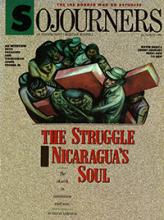While the Senate debate over John Tower captivated official Washington, a much more important event was unfolding just across town. Students at Howard University rose up to protest the appointment of Republican National Chair Lee Atwater to their school's Board of Trustees.
As many as a quarter of Howard's 12,000 students became involved in what quickly became one of the most impressive campus protests in years. The students took over the administration building and vowed to remain until Atwater was removed from the board and a number of other demands were met concerning the quality of student life and curriculum at Howard. After three days of mounting intensity and growing confrontation between the students and Howard President James E. Cheek, Lee Atwater resigned.
Howard University is one of the nation's premier black universities. It is also a bastion for black America's professional and middle class. As such, Howard must have seemed an easy and symbolically valuable target of the Republicans' new strategy for recruiting blacks to the GOP.
Atwater, the leading spokesperson for the ambitious plan, was an attractive board candidate for the potentially lucrative assistance he might provide Howard in increased federal funding, ties to conservative money, and connections in the business community. Indeed, after he was rebuffed, a very wounded-looking Atwater was making a big point of how much he could have helped Howard.
Howard was buying, but the students weren't. The administration seemed willing to forgive and forget the high cost of the last eight Republican years to the black community, the rollback of civil rights gains during the Reagan administration, "constructive engagement" in South Africa, and an ugly election campaign that featured the "Willie Horton issue" in an unmistakable Republican campaign to appeal to white voters by playing on racial fears and stereotypes.
Read the Full Article

